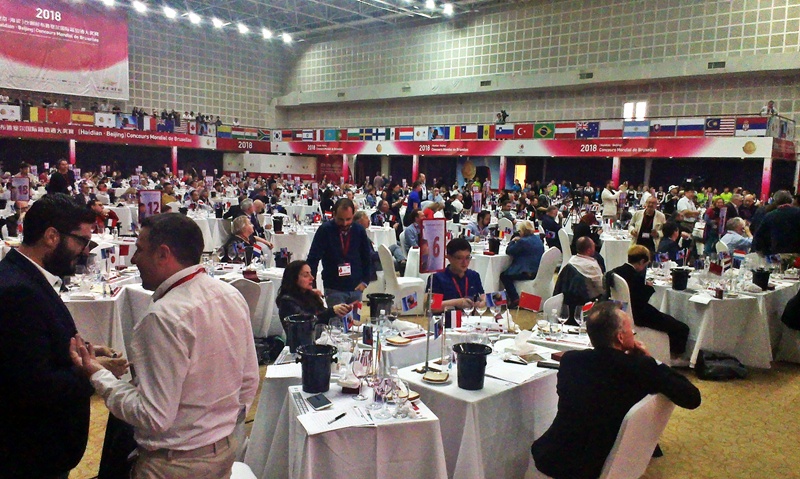By Jim Boyce | Chinese wines won 131 medals, including five “grand golds”, at the Concours Mondial in Beijing this month. The results, published today, also list 46 golds and 80 silvers for China.
That’s a lot of shiny hardware, and just the latest haul for China, but needs to be taken in context as sales of local wines have paled beside those of imports of late. Before I address that, first a look at the grand gold medals (golds and silvers listed at bottom):
This year’s four-day Concours Mondial involved over 9,000 wines and 330 judges from around the world. Of the 481 wines from China, 27 percent won medals, a typical ratio.
Ningxia led with 58 medals—1 grand gold, 27 gold and 30 silver. That’s no surprise as Ningxia makes some of the China’s best wines and enters these contests en masse.
Other top regions / provinces included Xinjiang with 27 medals, Shandong with 17 and Hebei with 14. The medals were spread across ten regions, provinces and cities, including Liaoning, Jilin, Beijing, Gansu, Henan and Yunnan. Here is a regional look at the results:
Chinese wines have been stacking up medals for over a decade, in contests by Decanter, Wine 100, CWSA and others. But the sobering reality is that despite the increasing quality of local wines, producers have steadily lost market share to imports the past few years.
Many consumers distrust local wines because of poor experiences years ago and are now uninterested in giving Chinese producers a chance, especially given they now have access to descent, diverse and inexpensive wines from around the world.
Most good local wine are also very pricey. This is partly due to production costs: in north China, grape growers need to bury their vines each fall to protect them against cold dry winters, an expensive process. But it is also due to marketing strategies that target consumers who link price to quality.
I see Chinese wines in this contest that retails for rmb300 (USD45 / EUR40), rmb00 or even more, winning the same medals as wines from other countries that cost far less. And most of them are Cabernet-driven blends, in a country with a continent’s worth of soil and cliate types.
Those are just a few reasons: I’m working on a longer post now about why Chinese wine sales are so poor and will publish it soon. I also have a few posts coming up about my experiences as a judge at Concours Mondial this year.
Finally, it was nice to see wine made with Marselan do well—one grand gold, six golds and four silvers—given its potential to become “China’s grape”. On that theme, check out my most recent project, World Marselan Day, here and here.
Follow Grape Wall on Facebook and Twitter. Sign up for the China wine newsletter below. And check out sibling sites World Marselan Day, World Baijiu Day and Beijing Boyce.
